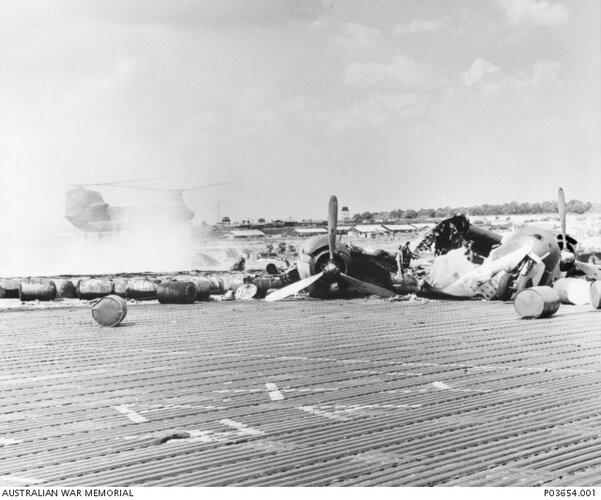- Joined
- 27 September 2006
- Messages
- 6,399
- Reaction score
- 6,780
Anyone, like me, interested in the saga of NATO vstol fighter-bomber projects in the 60s should get a copy of Chris Gibson's Typhoon to Typhoon. In fact anyone interested in our stuff should get this book.
It clears up a number of issues which had always puzzled me.
The Germans were keen to build a VSTOL replacement for the F104 Starfighter in its nuclear strike role and started with the VJ101C, a tilt engine jet similar to the Bell XF109. This then morphed into a jet lift version without tilt engines called VJ101D, that then vanishes in about 1964, turns into the VJ101E with lift engines and then is gone.
Thanks to Chris's book it is clear that the Germans and the French were trying to agree on a joint design, but as ever the might Dassault wanted it all his own way. So the Germans, having been told by the UK that we already have the P1154 which is just fine, turn to the US and embark on the super weird AVS/A400 with Boeing and then Fairchild Republic. By 1968 the UK and FRG have got over their fantasies (TSR2, P1154, AFVG, UKFVG, AVS, A400, NKF) and MRCA is born.
The Germans despite having been part of the Tripartite squadron with P1127 Kestrels seem believe that their solution to a light ground attack VSTOL fighter must have a lift jet as well as vectored thrust, so any joint RAF/Luftwaffe P1127 is a non starter. The Luftwaffe finally go for the cheapo option of replacing the G91 with a very similar conventional light fighter bomber in the Alpha Jet.
Meanwhile the Belgians and the Dutch were hoping that the Brits would produce another Hunter, only to find that P1154 was not likely to be in service till 1969/70.
Chris's book only deals in history and not what-ifs but a number of alternate historys present themselves.
If the RAF had recognised that what it needed to replace the Hunter was something more like Jaguar than P1154, perhaps by 1970, the Belgians, Germans, Dutch, and others plus the Germans might have been flying a Jaguar style aircraft.
Alternatively, P1154 could have survived if NATO had not (after the Cuban Missile Crisis) moved to Flexible Response. A flying P1154 in 1966 would have shown its advantages over the Mirage IIIV and VJ101. A European, possibly even US buy of this aircraft would have replaced the F104, F100 and Hunter/Canberra with NATO
It clears up a number of issues which had always puzzled me.
The Germans were keen to build a VSTOL replacement for the F104 Starfighter in its nuclear strike role and started with the VJ101C, a tilt engine jet similar to the Bell XF109. This then morphed into a jet lift version without tilt engines called VJ101D, that then vanishes in about 1964, turns into the VJ101E with lift engines and then is gone.
Thanks to Chris's book it is clear that the Germans and the French were trying to agree on a joint design, but as ever the might Dassault wanted it all his own way. So the Germans, having been told by the UK that we already have the P1154 which is just fine, turn to the US and embark on the super weird AVS/A400 with Boeing and then Fairchild Republic. By 1968 the UK and FRG have got over their fantasies (TSR2, P1154, AFVG, UKFVG, AVS, A400, NKF) and MRCA is born.
The Germans despite having been part of the Tripartite squadron with P1127 Kestrels seem believe that their solution to a light ground attack VSTOL fighter must have a lift jet as well as vectored thrust, so any joint RAF/Luftwaffe P1127 is a non starter. The Luftwaffe finally go for the cheapo option of replacing the G91 with a very similar conventional light fighter bomber in the Alpha Jet.
Meanwhile the Belgians and the Dutch were hoping that the Brits would produce another Hunter, only to find that P1154 was not likely to be in service till 1969/70.
Chris's book only deals in history and not what-ifs but a number of alternate historys present themselves.
If the RAF had recognised that what it needed to replace the Hunter was something more like Jaguar than P1154, perhaps by 1970, the Belgians, Germans, Dutch, and others plus the Germans might have been flying a Jaguar style aircraft.
Alternatively, P1154 could have survived if NATO had not (after the Cuban Missile Crisis) moved to Flexible Response. A flying P1154 in 1966 would have shown its advantages over the Mirage IIIV and VJ101. A European, possibly even US buy of this aircraft would have replaced the F104, F100 and Hunter/Canberra with NATO

